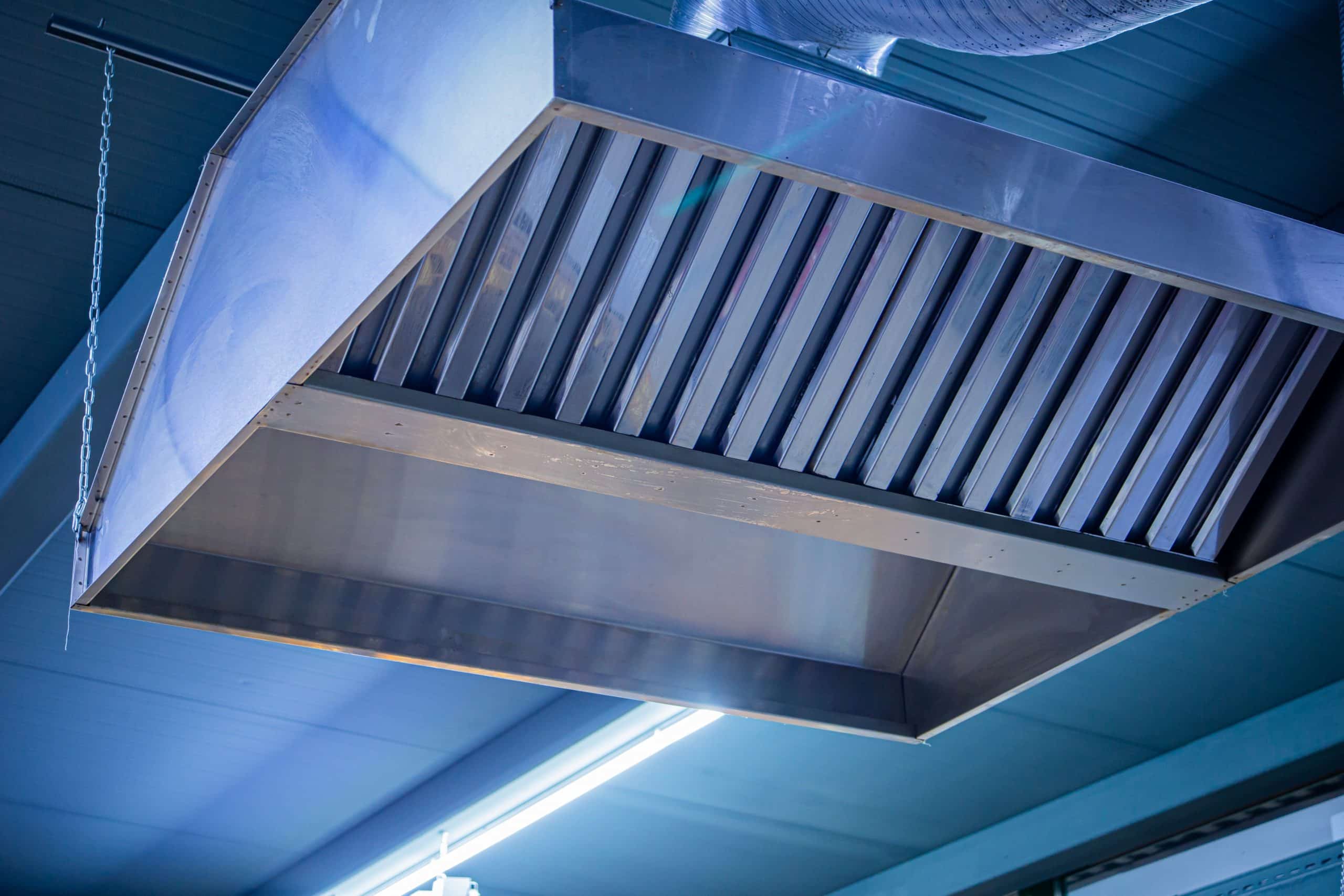In the design and maintenance of a commercial kitchen exhaust system, the choice of filter is not a small decision. Filters are the first line of defence against airborne grease, smoke, and particulates entering the ductwork. Their performance directly affects fire safety, compliance, and the long-term cost of cleaning and maintenance. Two of the most common filter types are baffle filters and honeycomb filters. While both are widely used, they perform differently under varying cooking conditions, and choosing the right type requires an understanding of how they work and what your kitchen demands.
How the Filters Work
Baffle filters use a series of angled, overlapping blades that force incoming air to change direction sharply. Grease particles, being heavier than air, lose momentum and impact the blades, where they stick and drain into a grease channel.
Honeycomb filters, by contrast, use a lattice of fine metal channels arranged in a honeycomb structure. As air passes through, the numerous small turns and surfaces create a greater opportunity for grease particles to collide with the metal and be captured. The result is higher efficiency, particularly for finer grease mist and vapour.
Comparative Performance
- Capture Efficiency
Baffle filters typically capture 80–90% of grease particles, making them effective for kitchens with moderate grease loads. Honeycomb filters can capture 90–95%, including finer particles that baffle filters may allow through. This makes honeycomb filters especially valuable in kitchens with high-intensity frying, grilling, or wok cooking, where vapour and mist are more prevalent.
- Airflow Resistance
Baffle filters present relatively low resistance to airflow, which helps maintain system efficiency and reduces strain on fans. Honeycomb filters, due to their denser structure, can create slightly higher resistance, though this is usually marginal in well-designed systems.
- Fire Safety
Both filters are designed to reduce the risk of flames entering the ductwork. Baffle filters perform well at this by creating a physical barrier, while honeycomb filters add the benefit of capturing smaller combustible particles.
Maintenance Considerations
1. Inspection Frequency
Both types of filters require regular exchange, but the intervals differ:
- Baffle filters:Because they primarily capture larger droplets, they typically load more slowly. Filter exchange can be less frequent, though still aligned with the intensity of kitchen use.
- Honeycomb filters:Their fine lattice captures smaller particles and mist, meaning they can clog more quickly. This makes shorter filter exchange intervals advisable, especially in heavy-use environments.
2. Monitoring Performance
- Airflow and Static Pressure:Clogged filters increase resistance, reducing exhaust efficiency. Using a differential pressure gauge (manometer) across the filter set is a proactive way to track clogging before it impacts performance.
- Visual Indicators: Managers should establish thresholds for when filters are considered “compromised” (e.g., visible film build-up across a significant surface area or pressure readings exceeding a set range).
3. Service Life and Replacement
- Baffle filters:Tend to have a longer operational life because their design is simple, durable, and resistant to deformation under repeated use.
- Honeycomb filters:More prone to wear over time due to their intricate structure. Finer channels may distort or degrade more quickly, especially under continuous heavy loads. As a result, their replacement cycle is typically shorter than baffles.
4. Fire Safety Considerations
- Baffle filters: Their angled channels act as a flame barrier, reducing the chance of flames entering ducts. Even if partially clogged, they tend to retain this safety function.
- Honeycomb filters: Capture smaller, more combustible particles, which reduces downstream fuel load. However, if they become heavily clogged, they themselves can hold more combustible residue, potentially becoming an ignition risk.
5. Impact on Exhaust System Maintenance
Filter performance directly affects how often ductwork and fans need servicing:
- With baffle filters, more fine mist bypasses into ducts, requiring more frequent duct cleaning.
- With honeycomb filters, more grease is trapped upfront, which can reduce duct cleaning frequency, but requires more diligent filter management.
6. In Summary
- Baffle filters: Longer lifespan, less frequent inspections, but allow more grease downstream.
- Honeycomb filters: Higher capture efficiency, shorter inspection intervals, and shorter service life, but they reduce duct cleaning demand.
The right choice often comes down to whether a business prefers more frequent attention at the filter stage(honeycomb) or more grease load further downstream(baffle).
Cost and Longevity
- Upfront Costs: Honeycomb filters are generally more expensive than baffle filters.
- Cleaning and Replacement Costs: Honeycomb filters may incur higher ongoing cleaning costs, but their superior capture efficiency can reduce grease accumulation in ducts, lowering duct-cleaning frequency.
- Durability: Both are typically stainless steel, built to withstand repeated cleaning. Baffle filters tend to outlast honeycomb filters in high-grease environments simply because they are less prone to clogging.
Making the Right Choice
The decision between baffle and honeycomb filters should be based on cooking intensity and type, as well as operational priorities:
Choose Baffle Filters if:
- Your kitchens are medium-use (restaurants with balanced menus, mixed cooking methods).
- Ease of cleaning and durability are top priorities.
- Airflow efficiency is critical to your operation.
Choose Honeycomb Filters if:
- Your kitchens handle heavy grease loads (fast food, steakhouses, wok kitchens).
- Capturing fine grease mist and vapour is essential to reduce duct contamination.
- You are willing to invest in more frequent filter cleaning for improved fire safety.
Which Filter is Right for Your Premises?
For portfolio managers overseeing multiple kitchens, the filter decision is not one-size-fits-all. Baffle filters provide a rugged, cost-effective option for many operations, while honeycomb filters deliver superior grease capture where the cooking load demands it. The best approach is to align filter choice with cooking intensity and risk profile, supported by a robust maintenance regime.
Getting this decision right not only improves fire safety and compliance but also optimises operating costs across your portfolio. In commercial kitchens, filters are more than just a detail—they are a frontline safeguard.

